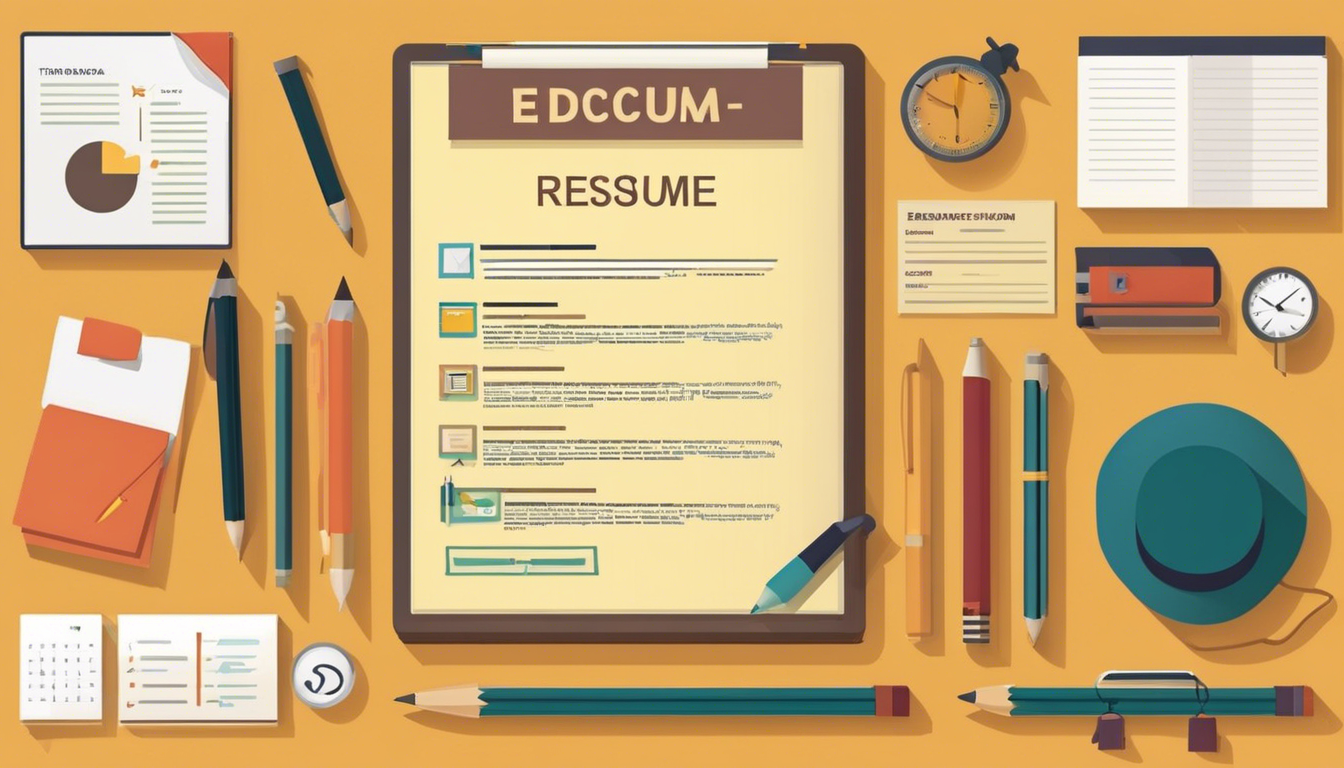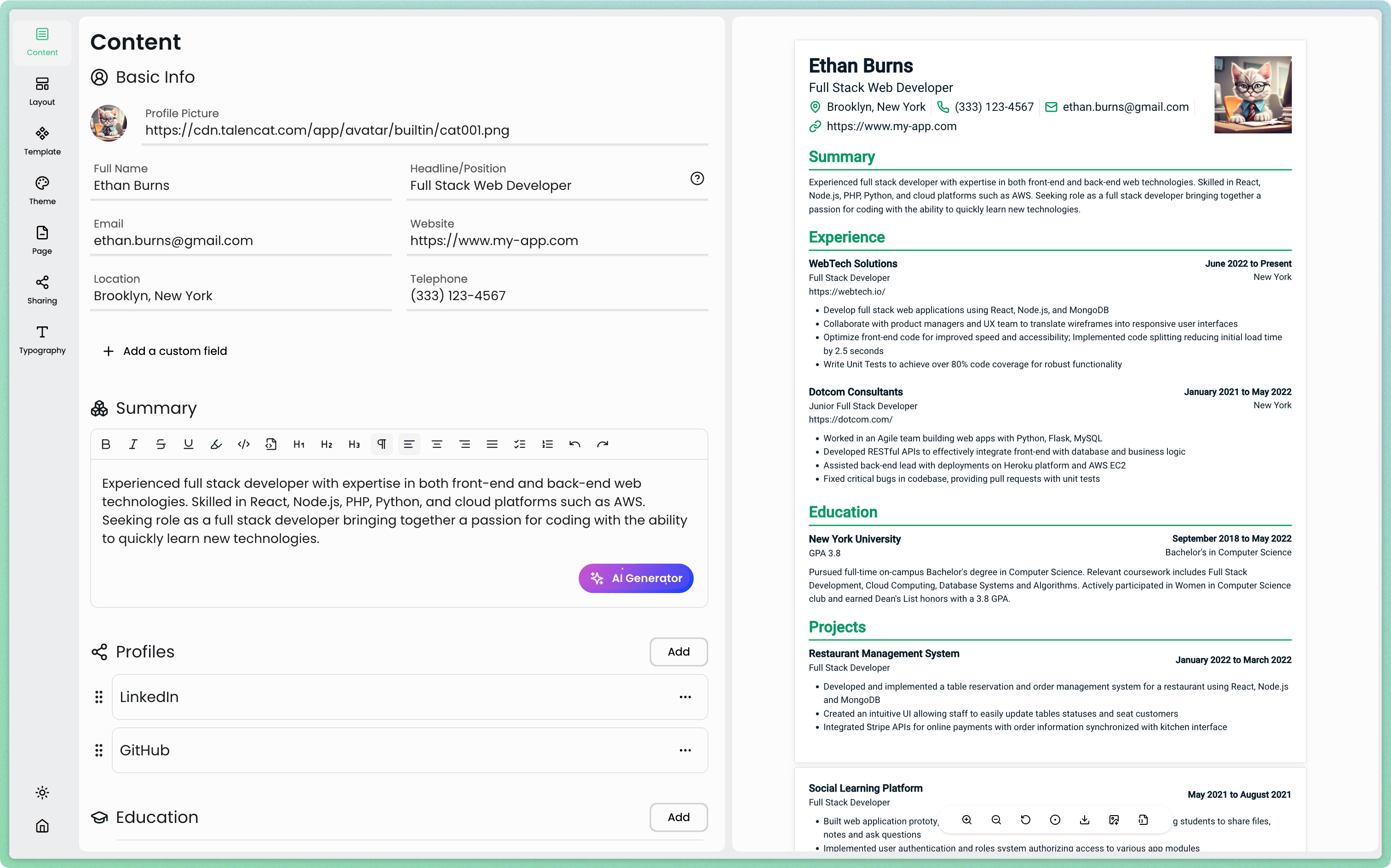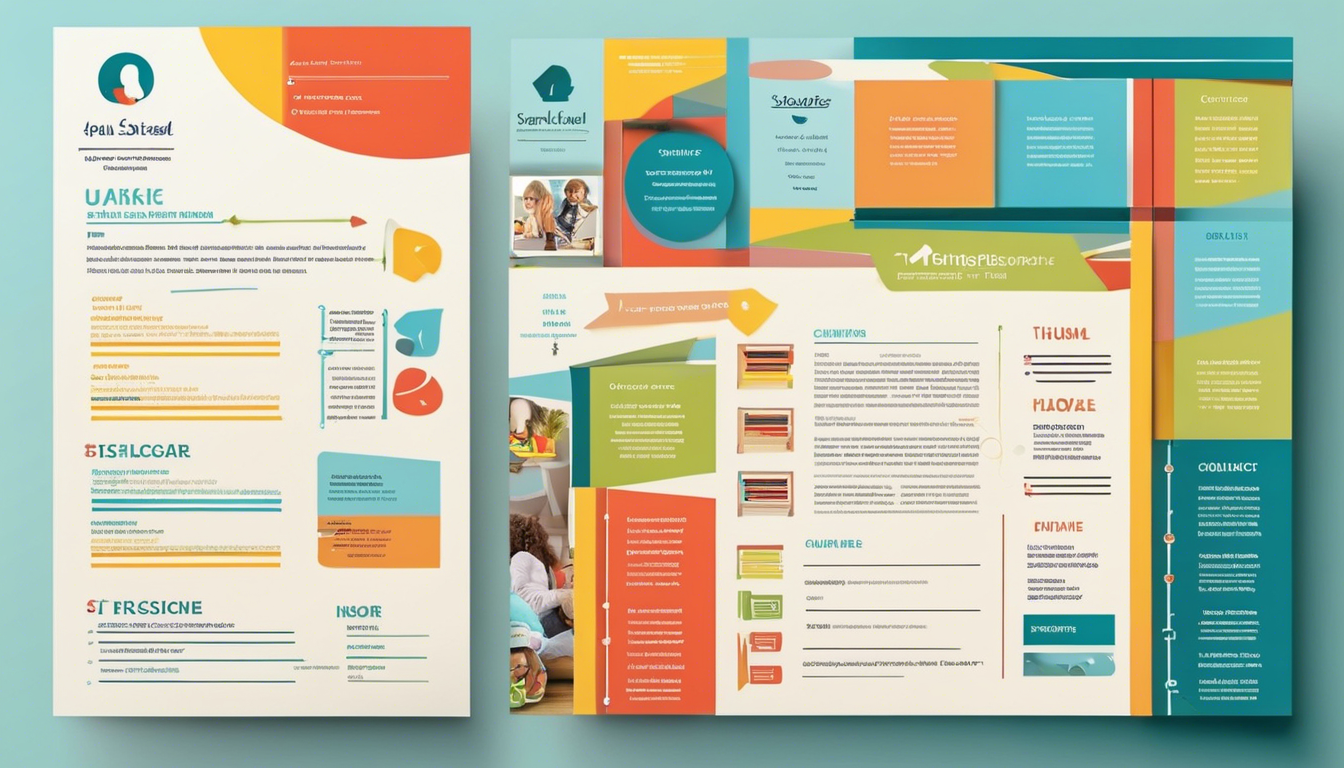In today's competitive job market, crafting a compelling resume is crucial for standing out among other candidates. One of the most important sections of your resume is the skills section, which provides potential employers with a quick overview of your capabilities and qualifications. This guide will walk you through the process of creating an effective skills section that showcases your strengths and aligns with the job you're seeking.
Resume Building Series:








Introduction
Importance of Skills on a Resume
Your resume is often the first impression you make on a potential employer, and the skills section plays a pivotal role in this introduction. It's a concise way to demonstrate your value and suitability for a position, allowing hiring managers to quickly assess whether you have the necessary qualifications for the job.
A well-crafted skills section can:
- Catch the attention of recruiters and hiring managers
- Highlight your most relevant abilities for the position
- Demonstrate your potential value to the company
- Increase your chances of passing through Applicant Tracking Systems (ATS)
- Set you apart from other candidates with similar experience
Overview of the Skills Section
The skills section of your resume is typically a dedicated area where you list your most relevant and impressive abilities. It should be a carefully curated selection of skills that are directly applicable to the job you're applying for. This section can include both hard skills (technical abilities) and soft skills (interpersonal traits), depending on what's most appropriate for your field and the specific position.
Types of Skills to Include
When crafting your skills section, it's essential to understand the different types of skills you can showcase and how they contribute to your overall profile as a candidate.
Hard Skills
Definition and Examples
Hard skills are specific, teachable abilities that can be defined and measured. These are typically technical skills that you've learned through education, training, or on-the-job experience. Examples of hard skills include:
- Programming languages (e.g., Python, Java, C++)
- Software proficiency (e.g., Microsoft Office, Adobe Creative Suite)
- Data analysis
- Foreign language proficiency
- Machine operation
- Project management methodologies (e.g., Agile, Scrum)
How to Identify Relevant Hard Skills
To identify the most relevant hard skills for your resume:
- Review job descriptions for positions you're interested in
- Look at industry trends and in-demand skills
- Assess your own technical abilities and certifications
- Consider the specific requirements of the company or industry
Soft Skills
Definition and Examples
Soft skills are personal attributes that enable you to interact effectively with others and succeed in the workplace. These skills are often transferable across different jobs and industries. Examples of soft skills include:
- Communication
- Leadership
- Teamwork
- Problem-solving
- Adaptability
- Time management
- Creativity
- Emotional intelligence
Importance of Soft Skills in the Job Market
While hard skills are crucial for performing specific job functions, soft skills are increasingly valued by employers across all industries. They contribute to:
- Effective collaboration with colleagues
- Successful client interactions
- Adaptability in fast-changing work environments
- Leadership potential
- Overall workplace harmony and productivity
Employers often look for candidates who possess a balance of both hard and soft skills, as this combination leads to well-rounded employees who can excel in their roles and contribute positively to the company culture.
How to Write the Skills Section
Creating an effective skills section requires careful consideration of both content and format. Here's how to structure your skills section for maximum impact:
Structuring the Skills Section
Format Options
There are several ways to format your skills section:
- List format: A simple, straightforward list of skills
- Categorized format: Skills grouped by type or relevance
- Visual format: Using charts or graphs to display skill proficiency levels
- Integrated format: Skills woven into job descriptions or achievements
Choose a format that best suits your industry and highlights your strengths effectively.
Use of Bullet Points vs. Paragraphs
Bullet points are generally preferred for skills sections because they:
- Are easy to scan quickly
- Create a clean, organized appearance
- Allow for concise presentation of information
Paragraphs can be used if you need to provide context or examples for your skills, but keep them brief and to the point.
Tailoring Skills to the Job Description
One of the most crucial aspects of writing an effective skills section is customizing it for each job application.
Researching Job Requirements
Before listing your skills:
- Carefully read the job description
- Research the company and its values
- Look at LinkedIn profiles of people in similar roles
- Review industry standards and trends
This research will help you identify the most relevant skills to include.
Aligning Skills with Keywords from Job Listings
Many companies use Applicant Tracking Systems (ATS) to screen resumes. To increase your chances of getting past these systems:
- Use exact phrases and keywords from the job description
- Include industry-specific terminology
- Prioritize skills mentioned multiple times in the listing
- Ensure your skills match the required qualifications

Best Practices for Listing Skills
To make your skills section as effective as possible, follow these best practices:
Be Specific
Avoiding Generalizations
Instead of listing generic skills, be specific about your abilities. For example:
- Instead of "Computer skills," list "Proficient in Microsoft Excel, including pivot tables and VLOOKUP functions"
- Rather than "Communication," specify "Public speaking experience with audiences of 100+ people"
Being specific helps employers understand the depth of your abilities and how they relate to the job requirements.
Quantifying Skills
Using Metrics and Examples
Whenever possible, use numbers and concrete examples to illustrate your skills:
- "Increased social media engagement by 50% using content marketing strategies"
- "Managed a team of 15 developers across 3 international offices"
- "Fluent in Spanish with 5 years of professional translation experience"
Quantifying your skills provides tangible evidence of your capabilities and achievements.
Using Action-Oriented Language
Describing Skills in Context
Frame your skills in terms of actions and results:
- "Implemented agile methodologies to improve project completion rates by 30%"
- "Developed customer service protocols that increased client satisfaction scores from 85% to 95%"
- "Utilized data visualization techniques to present complex financial data to C-level executives"
This approach not only lists your skills but also demonstrates how you've applied them in real-world situations.
Common Mistakes to Avoid
When crafting your skills section, be aware of these common pitfalls:
Overloading the Skills Section
While it's important to showcase your abilities, listing too many skills can be counterproductive. It may:
- Overwhelm the reader
- Dilute the impact of your most important skills
- Make it difficult for recruiters to identify your core competencies
Stick to the most relevant and impressive skills for the job you're applying to, typically aiming for 10-15 key skills.
Misrepresenting Skills
Honesty is crucial when listing your skills. Misrepresenting your abilities can lead to:
- Awkward interview situations
- Potential job termination if hired
- Damage to your professional reputation
Only include skills you're confident in and be prepared to discuss or demonstrate them during the interview process.
Ignoring Soft Skills
Many job seekers focus solely on hard skills, overlooking the importance of soft skills. Remember to include a balance of both:
- Soft skills demonstrate your ability to work well with others and adapt to various situations
- They are often as important as technical skills in many roles
- Soft skills can set you apart from candidates with similar technical qualifications
Enhance Your Resume Skills with TalenCat CV Maker
Crafting a resume that effectively showcases your skills is crucial in today's competitive job market. The AI resume builder TalenCat CV Maker offers a powerful solution to help you highlight your skills and create a standout resume. Here's a step-by-step guide on how to use TalenCat CV Maker to write and present your resume skills effectively:
Step 1: Log in to TalenCat CV Maker and click the "+ Create Resume" button to start a new resume.

Step 2: Name your resume and choose to create from scratch or use an example template.

Step 3: In the resume editor, focus on the "Skills" section. TalenCat CV Maker provides a dedicated area for you to list and categorize your skills effectively.

Step 4: Utilize TalenCat's AI-powered suggestions to enhance your skills section. The platform can recommend relevant skills based on your job title and industry.

Once you've completed your skills-focused resume, you can easily export it as a PDF or enable online sharing for convenient distribution to potential employers.
TalenCat CV Maker's intuitive interface and AI-powered features make it simple to create a resume that effectively highlights your skills, increasing your chances of landing your desired job.
Examples of Effective Skills Sections
Example 1: Hard Skills-Focused
For a software developer position:
Technical Skills:
• Programming Languages: Java, Python, C++, JavaScript
• Web Development: HTML5, CSS3, React.js, Node.js
• Database Management: MySQL, MongoDB, PostgreSQL
• Version Control: Git, GitHub
• Cloud Platforms: AWS, Google Cloud Platform
• Agile Methodologies: Scrum, Kanban
Certifications:
• AWS Certified Developer – Associate
• Oracle Certified Professional, Java SE 11 Developer
Example 2: Balanced Hard and Soft Skills
For a marketing manager position:
Marketing Skills:
• Digital Marketing Strategy
• SEO/SEM
• Content Marketing
• Social Media Management (Facebook, Instagram, LinkedIn)
• Google Analytics and Google Ads
• Email Marketing Campaigns
Soft Skills:
• Team Leadership
• Project Management
• Client Relationship Management
• Creative Problem-Solving
• Excellent Written and Verbal Communication
• Adaptability in Fast-Paced Environments
Tools:
• HubSpot, Salesforce, Adobe Creative Suite, Mailchimp
Example 3: Creative Format
For a graphic designer position:
Design Skills:
★★★★★ Adobe Creative Suite (Photoshop, Illustrator, InDesign)
★★★★☆ UI/UX Design
★★★★★ Typography and Layout
★★★★☆ Brand Identity Development
★★★★★ Digital Illustration
★★★☆☆ 3D Modeling (Blender)
Soft Skills:
• Creative Problem-Solving
• Client Communication
• Project Management
• Attention to Detail
• Collaborative Teamwork
Additional Skills:
• Basic HTML/CSS
• Photography
• Print Production Knowledge
Tools and Resources for Enhancing Skills
To stay competitive in the job market, it's important to continuously develop and update your skills. Here are some resources to help you enhance your skill set:
Online Courses and Certifications
- Coursera: Offers courses from top universities and companies
- edX: Provides online courses from leading educational institutions
- LinkedIn Learning: Offers a wide range of professional development courses
- Udemy: Features courses on various topics, including technical and soft skills
- Google Digital Garage: Offers free courses on digital marketing and career development
Skills Assessment Tools
- LinkedIn Skill Assessments: Test your knowledge in various areas and showcase your proficiency
- Pluralsight Skill IQ: Measures your technical skill level in specific areas
- Indeed Skills Tests: Allows you to take tests to demonstrate your abilities to potential employers
- Pymetrics: Uses gamified assessments to measure cognitive and emotional traits
Resume Writing Services
If you need professional help crafting your resume:
- TopResume: Offers professional resume writing and review services
- Resume.com: Provides free resume templates and paid writing services
- Zety: Offers resume building tools and professional writing services
- Monster: Provides resume writing services and career advice
Remember, while these tools and services can be helpful, the most effective way to enhance your skills is through practical application and continuous learning in your field.
Conclusion
Recap of Key Points
Crafting an effective skills section for your resume is a crucial step in your job search process. Remember these key points:
- Include a mix of relevant hard and soft skills
- Tailor your skills to each job application
- Be specific and use quantifiable metrics when possible
- Use action-oriented language to describe your skills in context
- Avoid common mistakes like overloading or misrepresenting your skills
- Continuously update and enhance your skill set
Encouragement to Craft a Strong Skills Section
Your skills section is your opportunity to showcase what makes you a valuable candidate. Take the time to thoughtfully curate and present your abilities in a way that aligns with your target job and industry. By following the guidelines and best practices outlined in this guide, you can create a compelling skills section that captures the attention of hiring managers and increases your chances of landing your desired position.
Remember, your resume is a living document. As you gain new experiences and develop new skills, don't hesitate to update your skills section accordingly. With a well-crafted skills section, you'll be well on your way to making a strong impression and advancing your career.


